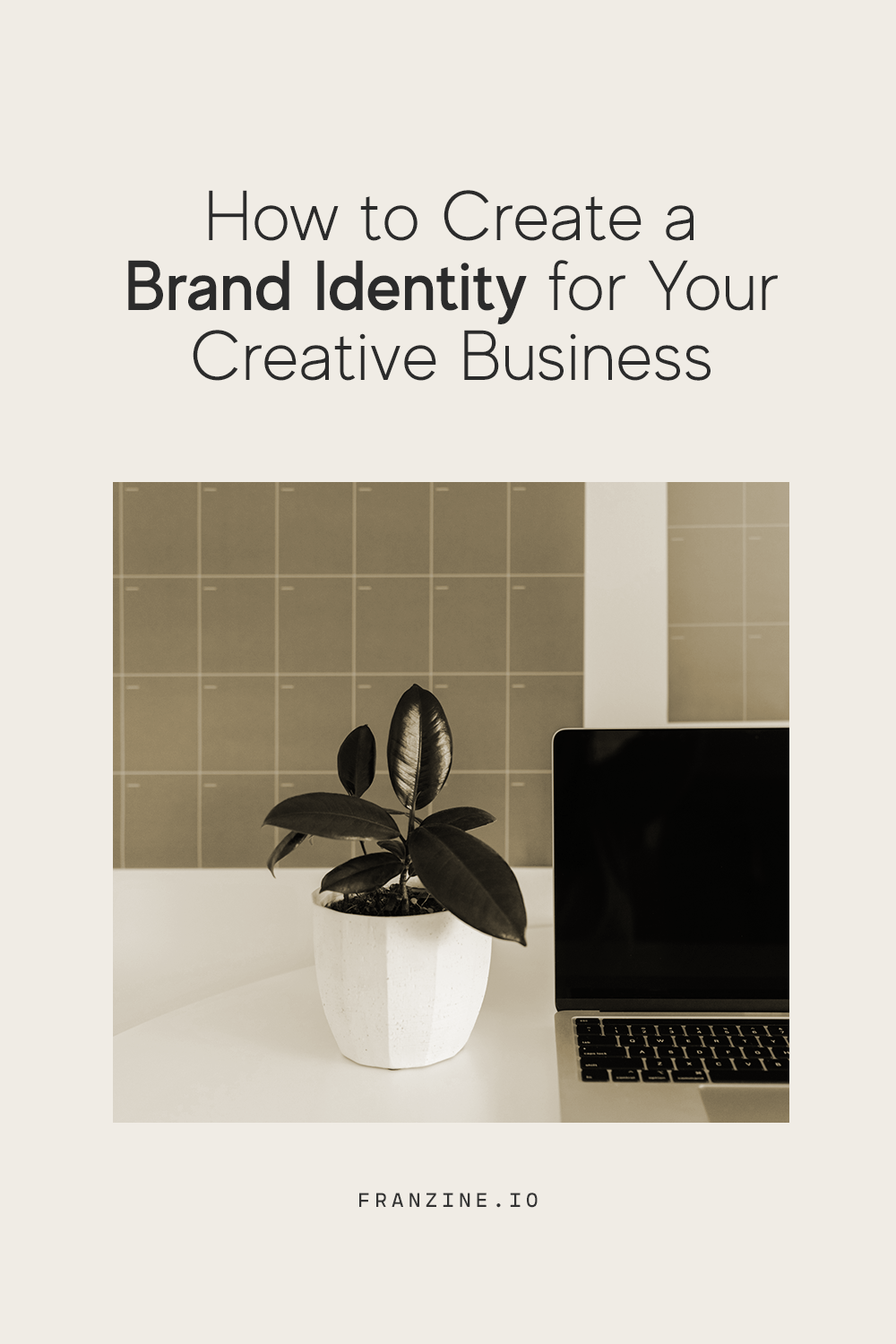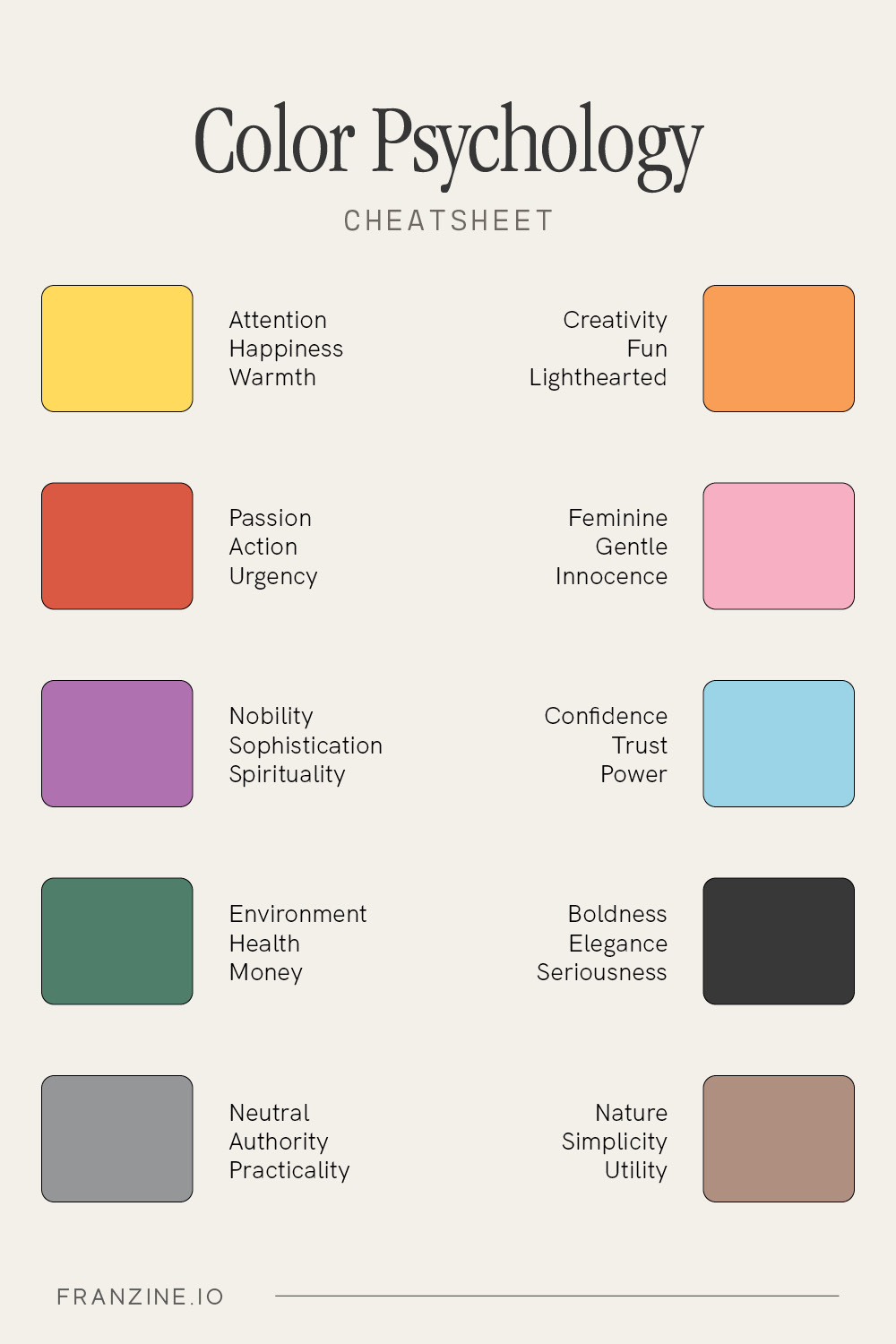How to Create a Brand Identity for Your Creative Business
Crafting a brand identity for creative business should be one of the first things you do after deciding that you want to start one. It creates a solid foundation for a successful company.
Quick note: If you want to know the first steps of starting a graphic design business, read this (and then come back!)
The benefit of crafting a great brand is that your target market will rave about your company, values, offers, etc. And of course, you’ll want your audience recommending you as much as possible. When they think about a wonderful solution to their problem, they think of your business. These factors create a powerful brand essence for you.
You want to define your brand well from the start. To do this properly means that people will be saying what you want them to say! This is what creates a strong brand identity.
Table of Contents
- What is brand identity?
- Develop a consistent brand image
- Learn why brand identity is important
- What makes a brand identity?
- How do you build brand identity design for your online business?
- Your brand assets start with a brand questionnaire
- Create a brand identity mood board
- Find your brand’s color palette with color psychology
- Dream up your customer (target market)
- A successful brand will have a solid mission
- Choose 3 words to describe your brand story
- Look for visual patterns in your mood board
- Put all your brand strategy elements together
What is brand identity?

Brand identity is as a product or service that communicates your brand message and how you would like to interact with customers. The concept of a brand encompasses much more than just names and symbols. An instantly recognizable brand can be defined as the factor that distinguishes one business from another (called differentiation).
As you’ve heard before, branding is not just about the logo. That’s one of the later steps in this whole process. Branding is about what you want other people to say when they see your business. Similarly, that’s why it’s called a brand personality.
It’s like thinking about a friend and describing that friend to someone else.
Develop a consistent brand image
Your brand image influences your clients perceptions of your brand. Think about the big brands and designer names out there. They follow the same consistent brand image and have remained true to that for decades. Once you’re confident in the style and design of your company, you can maintain consistency in all marketing campaigns.
Learn why brand identity is important
The challenge is getting initial attention from customers. When the lack brand awareness, it threatens businesses. Competitors in the same industry can steal fans quickly just by having better positioning and clear statements that resonate with their followers. A strong brand with consistent messaging is the best way to get an edge over competitors who are popping up regularly.
What makes a brand identity?
Brand identity is not deemed a good thing unless you are actually communicating it properly to your audience. The best brand identity should be easily relatable to your target market. Creating an identity without proper research will cost you time and resources. Fortunately, this guide can help you prevent these things from happening!
Need assistance or more professional branding? Check out my services here!

How do you build brand identity design for your online business?
Your brand assets start with a brand questionnaire
With a blank sheet of paper (or document for those who prefer digital), leave two spaces. One will be called “personal” and the other “business”.
In “personal”, start writing every single thing that comes to your mind about yourself. List things like who you are as a person and professional, skills you have, your personality, your interests, and your passions or hobbies.
Important: Do not be nitpicky with your words and do not edit this.
Next, fill up the “business” space. List the type of people you want to help, how you can help them, and why you want to help.
Create a brand identity mood board
Pinterest is the easiest place to create one. There are other websites too, like Go Moodboard or Niice.
First, find photography that speaks to you. Next, look for fonts and quotes. Pin items that fit the mood you’re going for. Do what feels right. Find a few of each category so you can compare them later.
Find your brand’s color palette through color psychology
Finally, find colors that really bring out the elements of your brand goals. Choose ones that make you happy first. You’ll start seeing a theme. If you’re all over the place, you can read up on color psychology. It will help you choose a color based on the mood you want to bring.

A quick guide to color psychology:
- Yellow: Attention, Happiness, Warmth
- Red: Passion, Action, Urgency
- Purple: Nobility, Sophistication, Spirituality
- Green: Environment, Health, Money
- Gray: Neutral, Authority, Practicality
- Orange: Creativity, Fun, Lighthearted
- Pink: Feminine, Gentle, Innocence
- Blue: Confidence, Trust, Power
- Black: Boldness, Elegance, Seriousness
- Brown: Nature, Simplicity, Utility
A visual board filled with inspiration is the best way to see your brand in one sitting.
Dream up your customer (target market)
Now, it’s time to talk specifics about your dream customer, reader, or client. You answered the questions in the first part of the article about who you want to serve. It’s time to narrow it down to one (yes, only one) fictional person.
It’s important to be as specific as possible. This way, we can better visualize who we’re targeting and what they might need or want from us.
For example, if we’re an editorial photographer, your dream customer might be an art director in the metro area. She might be looking for someone who can capture the brand perfectly just by looking at the brief and brainstorming creative ideas.
Tip: If you’re trying to attract people like you, this will be a breeze!
So, who is this person? What do they look like? Give them a name, occupation, age, location, etc.
Then, go deeper into psychographics. What do they like to do? What are their pain points? What are their goals?
Now sum up what you wrote. Think about websites with a section called “Who This is For”. They describe who would get the most value from this business. Write that down based on your answers above. Don’t be afraid to dream big. Your dream customer is out there, and you can find them.

A successful brand will have a solid mission
This is where we dig more into the “why” you’re in business in the first place. Some of your answers may repeat and overlap with the other answers. But that’s a good thing. You’ll be reinforced of your values and beliefs.
Here are some examples from other businesses:
- Skillshare: “We started Skillshare to close the professional skills gap and provide universal access to high-quality learning. By teaching the skills needed in tomorrow’s world, Skillshare empowers creators to pursue the work they love today.”
- Creative Commons: “Creative Commons helps you legally share your knowledge and creativity to build a more equitable, accessible, and innovative world — unlocking the full potential of the internet to drive a new era of development, growth, and productivity.”
- Patagonia: “Build the best product, cause no unnecessary harm, use business to inspire and implement solutions to the environmental crisis.”
Need more help with your brand strategy? I love helping business owners build a solid brand identity! See more details here!
Choose 3 words to describe your brand story
Now, you need to refine what you wrote. Go back and look through your questionnaire and circle any words that pop out. After that, ask yourself if you have any repeated words.
What is the theme you’re starting to see?
- Your first word should describe a personality. Maybe it’s “fun”, or “energetic”.
- Your second word should be an adjective or something visual. Something like “colorful”, “beautiful”, “original”.
- Your third word should be about your service, what you do or what you can offer. Examples are “art”, “hand lettering”, “web design” or “consulting”.

Look for visual patterns in your mood board
The beauty of mood boards is that you can see everything on one page that relates to your branding.
Take the mood board seriously! It speaks for you if you were at first unable to explain your brand.
Photography
In addition, photography can have an enormous impact on your branding, from products to advertising. How do pictures influence storytelling to your customers? Everything has a mood and you can give a good first impression within seconds of website viewers by pairing brand colors, on-brand photos, and your brand voice.
Illustration
Moreover, for illustrations it needs to be consistent. Use your color palette as a guide. Use the correct style determined by everything above to create your graphics. Consider using an illustration to compliment other visual elements.
Put all your brand strategy elements together
In conclusion, it’s important to define your brand identity early on. It will help you focus on the aspects of your business that you enjoy, and will help you make decisions about what to do and what not to do with your business. A strong brand identity will serve as a guide for what you should do for your business and how you steer your marketing efforts.
Once you’ve truly defined who and what you’re working for, it will cancel out anything that is not in focus. A curated brand is a contagious brand. In fact, if you’re too general, it will not attract your dream customers.
Do you feel like you’re missing cohesive branding and brand strategy for your business?
I help entrepreneurs and small business owners by creating strong, memorable brands that attract the right customers and increase sales. If this sounds like you, check out my services for more information.
Congratulations! You’ve tackled outline of your style guide and brand guidelines. It’s not easy and it’s an extensive process that you need to put your heart and soul into.
Get the 3-day email guide to writing something that feels more like you and less like you're applying to a job so you can build your personal brand